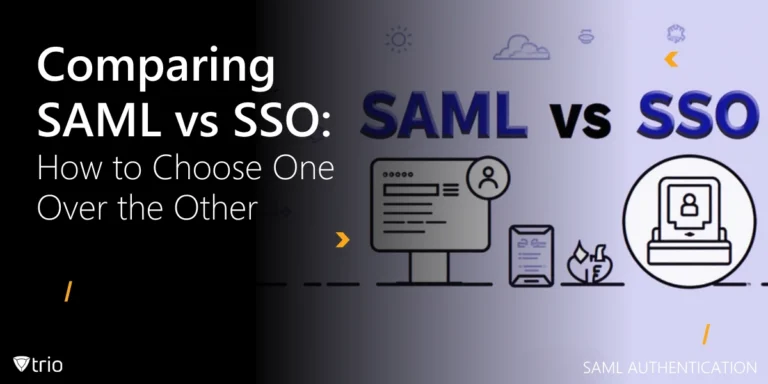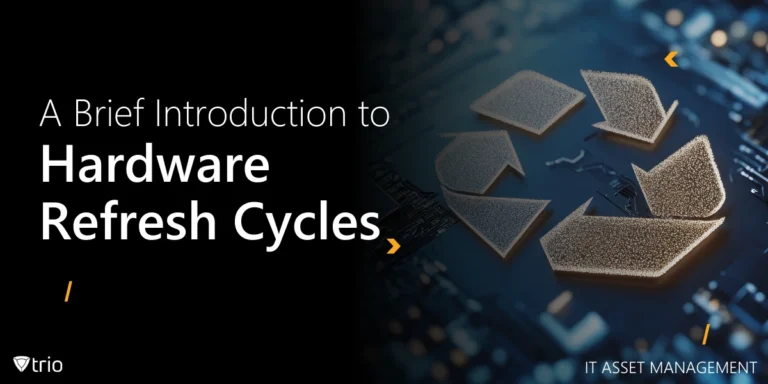What Is Android Zero-Touch Enrollment?
Android zero-touch enrollment is a streamlined and automated method for deploying and provisioning Android devices within an organization. Zero-touch enrollment is sometimes called zero-touch deployment by different companies, though in Google’s Android operating system, it is enrollment. It simplifies the setup and configuration process for large-scale deployments, making it easier for IT administrators to manage and maintain fleets of devices effectively. Zero-touch enrollment is primarily designed for enterprise use and is especially useful for organizations that deploy a large number of Android devices, such as smartphones, tablets, or rugged devices, to their employees.
With Google’s zero-touch enrollment, devices can be pre-configured and provisioned with corporate policies and settings before they are even unboxed by end-users. This automation eliminates the need for manual setup and configuration, saving time and effort for IT administrators and ensuring consistency across deployments.
When users receive a zero-touch enrolled device, they can simply power it on and connect to a network. The device automatically retrieves its configuration settings, applications, and policies from the organization’s mobile device management (MDM) or enterprise mobility management (EMM) solution, without requiring any manual intervention.
Zero-touch enrollment seamlessly integrates with leading mobile content management systems, allowing organizations to centrally manage and control enrolled devices from a single console. Administrators can enforce security policies, deploy applications, and perform remote management tasks, such as locking or wiping devices, with ease.

How Secure Is Zero-Touch Enrollment?
Zero-touch enrollment in Android is designed with security features like encrypted communication and secure device provisioning. Devices need authentication to enroll, and compliance checks ensure they meet security standards. Remote management tools allow administrators to monitor and control devices, while regular updates help patch vulnerabilities. Though it’s secure, organizations should still implement strong authentication and educate users on security practices for added protection. Zero-touch provisioning streamlines the enrollment process, ensuring devices are automatically configured and deployed without manual intervention, further enhancing efficiency and security.
Best Security Practices for Android Zero-Touch Enrollment
Here are some of the best security practices you can use for Android Zero-Touch Enrollment.
-
Enable Device Encryption
Require that all devices enrolled through zero-touch enrollment have encryption enabled. Encryption ensures that data stored on the device is protected, even if the device is lost or stolen. Android devices typically have encryption capabilities built-in, and organizations should enforce encryption as part of their enrollment policies.
-
Implement Strong Authentication
Utilize strong authentication methods, such as passcodes, PINs, or biometric authentication, to secure access to enrolled devices. Require users to set up secure unlock methods during the initial setup process. Additionally, consider implementing multi-factor authentication (MFA) for added security, especially for accessing sensitive corporate resources.
-
Enforce Device Compliance Policies
Implement device compliance policies to ensure that enrolled devices adhere to security standards and configurations set by the organization. This may include requirements such as enabling screen locks, disabling USB debugging, and enforcing the installation of security patches and updates. Use mobile device management (MDM) or enterprise mobility management (EMM) solutions to enforce these policies automatically.
-
Enable Remote Wipe and Lock
Enable remote wipe and lock capabilities for enrolled devices to protect sensitive data in the event of loss or theft. This allows administrators to remotely erase all data from a device or lock it to prevent unauthorized access. Remote wipe and lock should be easily accessible through the MDM or EMM console and should be initiated promptly when a device is reported lost or stolen.
-
Regularly Monitor Device Activity
Monitor device activity and security events to detect and respond to potential threats promptly. Utilize logging and monitoring tools provided by MDM or EMM solutions to track device status, security incidents, and compliance violations. Implement automated alerts and notifications to notify administrators of suspicious activities or security breaches.
-
Educate Users on Security Awareness
Educate users about security best practices and their responsibilities in maintaining the security of their enrolled devices. Provide training and awareness programs on topics such as phishing awareness, safe browsing habits, and the importance of keeping devices up to date with security patches. Encourage users to report any security incidents or suspicious activities promptly.
Conclusion
Over-the-air provisioning, coupled with Android zero-touch enrollment, represents a significant advancement in device management, providing organizations with the tools to efficiently deploy and maintain Android devices at scale. Through automated provisioning, seamless integration with management solutions, and robust security features, zero-touch enrollment simplifies the deployment process while enhancing security and compliance. By implementing best security practices such as encryption, strong authentication, and proactive monitoring, organizations can leverage the full potential of zero-touch enrollment while mitigating security risks effectively. Android zero-touch enrollment can also be seamlessly integrated with MDM/EMM solutions such as Trio. We recommend you experience Trio’s capabilities with this free demo to see how enrolling devices, onboarding, and device management have never been easier.
Get Ahead of the Curve
Every organization today needs a solution to automate time-consuming tasks and strengthen security.
Without the right tools, manual processes drain resources and leave gaps in protection. Trio MDM is designed to solve this problem, automating key tasks, boosting security, and ensuring compliance with ease.
Don't let inefficiencies hold you back. Learn how Trio MDM can revolutionize your IT operations or request a free trial today!




